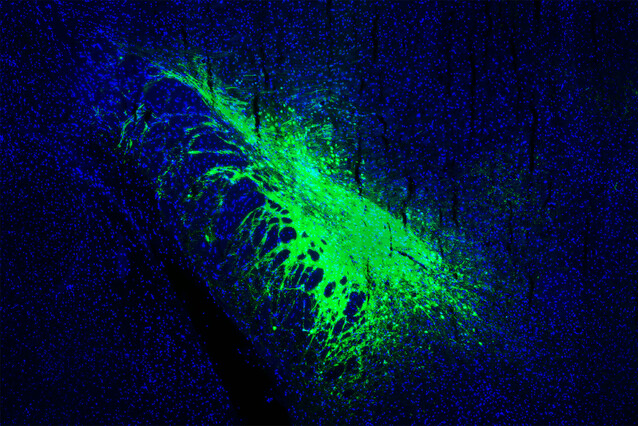Curb your enthusiasm: neuroscientists find key to self-control
Scientists characterised brain functions that are key to reining in impulsive behaviours. Studying mice’s responses to a potential treat, they could identify the brain region, network, and signalling pathways that form the neuronal basis of self-control. The findings were published in the journal eLife.
A child, a marshmallow – a match made in heaven. And the ingredients of a behavioural assay that has made the unlikely journey from research lab to popular culture: thought up in 1972, the “Marshmallow Test” assesses the capacity of a child to impose restraint on oneself when put in front of a treat. The children can either take the sweet now or control their urges and wait for even more treats later. While the experiment and its wild conclusions remain controversial, the test’s popularity proves that impulse control is a very relatable topic of behavioural research. The neuronal basis for impulse controls, however, is poorly understood.
Scientists from the lab of Wulf Haubensak at the IMP as well as at Boehringer Ingelheim and others now report important new insights on this issue. Impulsivity is a trait that varies from one individual to another. However, the neuronal mechanisms ‘programming’ this variance remain largely unknown.
“We all know that individuals are different, and that each shows behaviour unique to them. This project was a neuroscientist's dream of exploring why individuals behave the way they do and how this is related to impulsivity.” says Andreea Constantinescu, an author of the study.
Tracking down the circuit
For their study, the scientists first screened a population of genetically very similar mice and picked out animals that were especially pronounced on the impulsivity scale – either very easily triggered or leaning to taking things easy.
The selected animals were then trained to perform in a “Go/No-Go” test, in which a mouse is first alerted to an imminent clue. Then after waiting for ten to 30 seconds, signal A tells the mouse that it can go for a drop of liquid treat now – or signal B warns the mouse to wait a little longer before it can drink. If a mouse ignores waiting or stop signal B and makes an impulsive choice to go after the reward right away, the drop will not be provided.
The scientists wanted to map which brain regions control such impulsive actions. Therefore, they performed fMRI brain scans comparing the brain activity patterns in highly versus lowly impulsive animals. This revealed that a region in the basal ganglia of the brain that was known to gate motor control, the subthalamic nucleus (STN), is a hotspot for controlling impulsivity. Electric signals in the STN showed that impulsive actions are separable from motor control and manipulating the STN allowed the scientists to selectively increase or decrease impulsivity. Next, they turned their interest to the molecular pathways underlying this mechanism.
Using pharmacological and genetic tools, the scientists showed that the observed impulsive actions are modulated through a specific receptor in the STN, the metabotropic glutamate receptor 4 (mGlu4). The signalling pathways involving this receptor make impulse control independent from the general motor control that is also achieved by the STN, allowing the brain to multiplex several behavioural features within a single brain region.
A "great surprise"
“Impulsivity is a fascinating behavioural trait, balancing risk taking and patience for greater, but delayed reward. It was a great surprise that such a complex trait as this could be pinpointed down to a single brain region and modulated by a very specific receptor within it.” says Lukasz Piszczek, lead author of the study.
The study was published with support from the Vienna BioCenter Core facilities and Boehringer Ingelheim in the journal eLife, and zooms in our understanding of impulse control from brain regions to cellular and molecular levels. The findings are still away from clinical application, but point at a direction that could become useful for patient care. This is important, as many psychiatric disorders – such as ADHD (Attention Deficit Hyperactivity Disorder) – come with deficits in impulse control. In the long term, the findings of this study could contribute to a better understanding of these, and ultimately might help with diagnostics and therapy.
Original Publication
